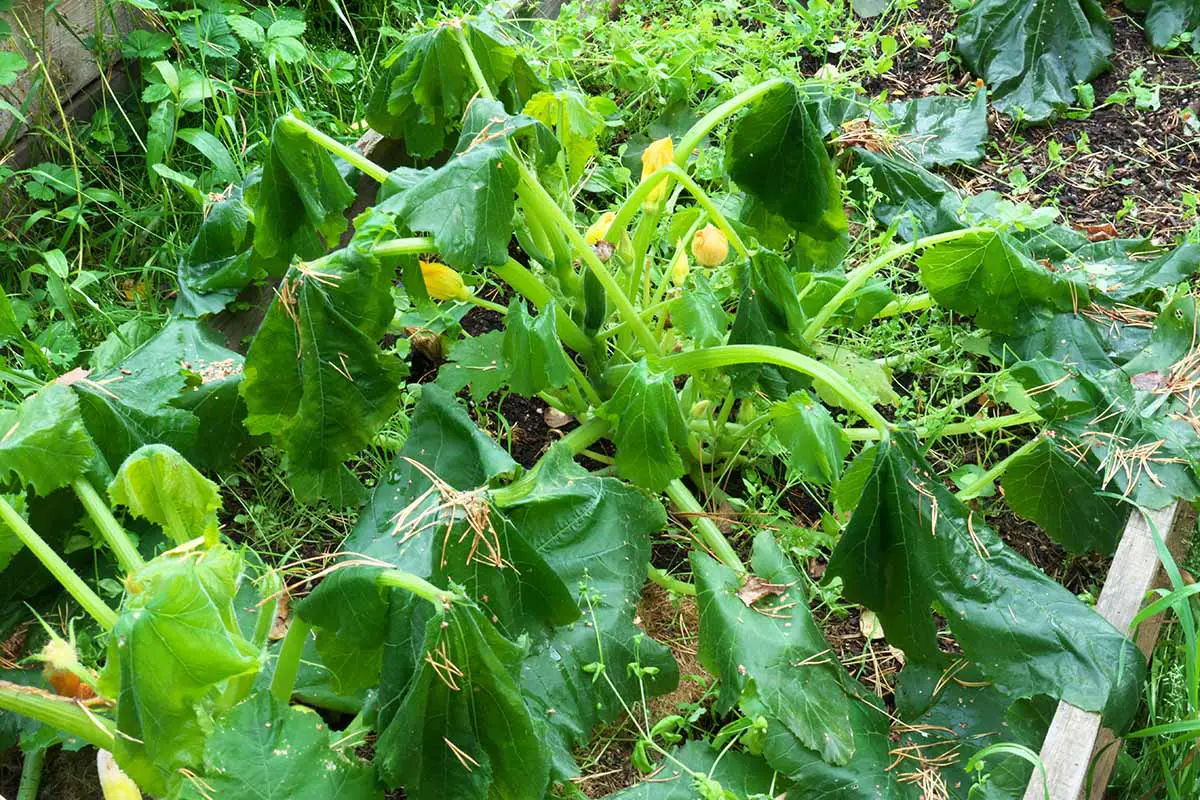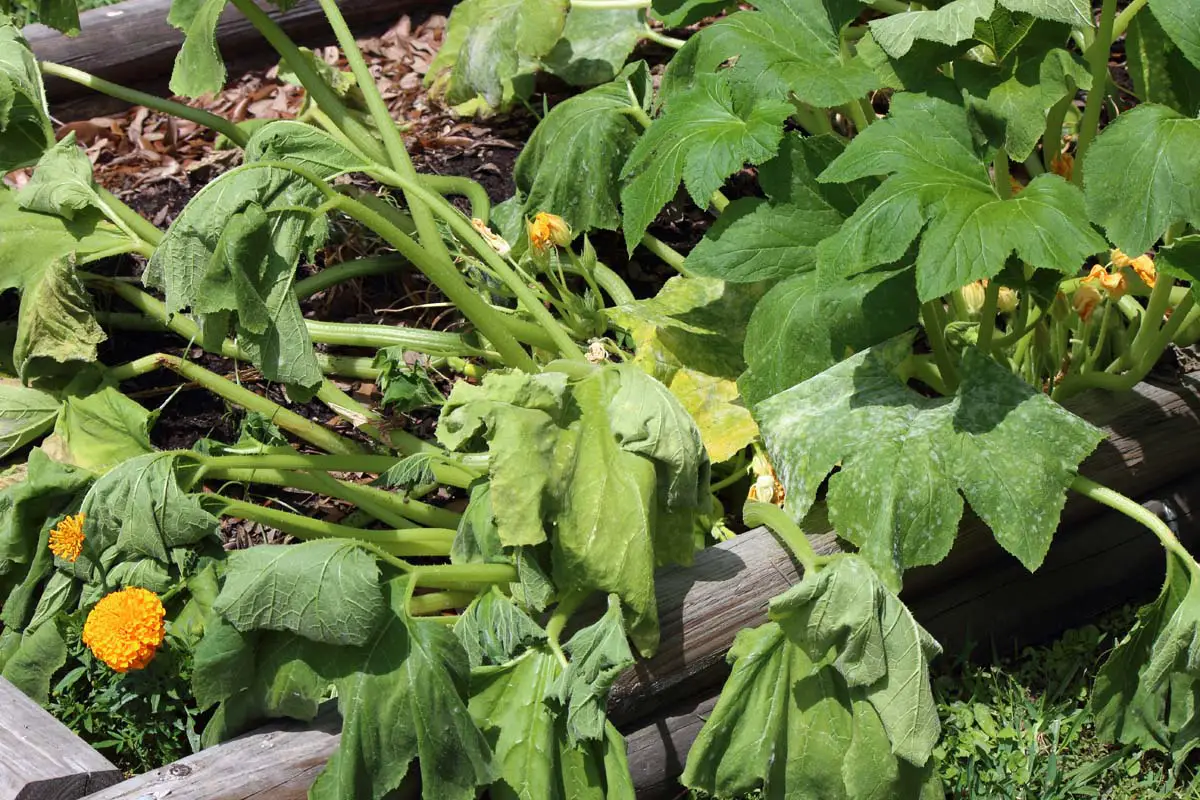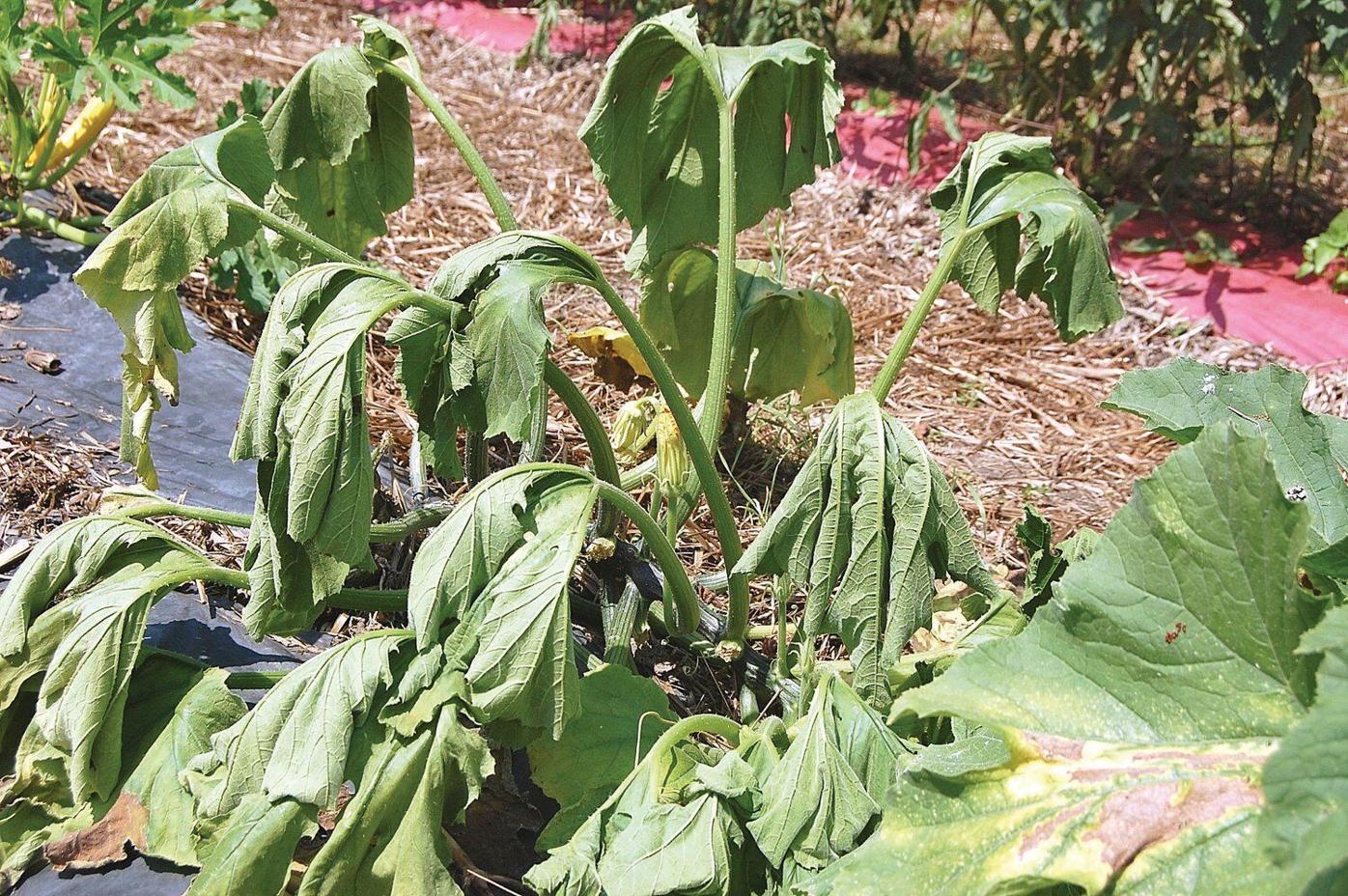If you’ve ever noticed your zucchini leaves looking a little droopy and lackluster, you’re not alone. There are several common reasons why zucchini leaves may start wilting, and understanding these causes can help you rescue your plants and keep them thriving. From underwatering to pests and diseases, this article will explore the main culprits behind zucchini leaf wilting and offer practical tips to help you prevent it from happening in the future. So don’t despair, we’ve got you covered when it comes to keeping those zucchini leaves happy and healthy! Let´s dive in, What are some Common Reasons for Zucchini Leaves Wilting?
Lack of Water
Insufficient watering
One common reason for zucchini leaves wilting is insufficient watering. Zucchini plants require consistent and adequate watering to thrive. If you consistently under-water your zucchini plants, the leaves may start to wilt and droop. It is important to ensure that the soil is consistently moist, but not waterlogged. Adequate watering can help prevent wilting and keep your zucchini plants healthy.
Irregular watering
Another factor that can cause zucchini leaves to wilt is irregular watering. If you water your plants sporadically or forget to water them for extended periods, the inconsistent moisture levels can stress the plants and lead to wilting. It is important to establish a regular watering schedule to provide your zucchini plants with the necessary hydration they need to stay healthy and prevent wilting.
Watering at the wrong time of day
Watering at the wrong time of day can also contribute to zucchini leaves wilting. It is best to water your zucchini plants early in the morning or late in the evening when the temperatures are cooler. If you water your plants during the hottest part of the day, the water can evaporate quickly and not provide adequate hydration to the leaves and roots. This can result in wilting and overall stress on the plants. By watering at the correct time, you can help prevent leaf wilting and promote healthy growth.

Overwatering
Excessive watering
While insufficient watering can lead to wilting, overwatering is another common culprit. Overwatering zucchini plants can result in waterlogged soil, which can suffocate the roots and prevent the plants from getting the necessary oxygen. This can cause the leaves to wilt and the overall health of the plants to decline. It is essential to find the balance between providing enough water and avoiding excessive watering to prevent wilting and root problems.
Poor drainage
Poor drainage is often associated with overwatering and can contribute to zucchini leaf wilting. If the soil does not drain properly, excess water can accumulate and saturate the roots, leading to waterlogged conditions. This lack of oxygen can cause root rot and result in wilted leaves. It is crucial to ensure that your zucchini plants are planted in well-draining soil or consider improving drainage by incorporating organic matter or using raised beds.
Waterlogged soil
Similar to poor drainage, waterlogged soil can also lead to wilting. If your zucchini plants are constantly sitting in water, the roots can become deprived of oxygen and suffocate. This can weaken the plants and cause the leaves to wilt. It is important to monitor the moisture levels in the soil and adjust your watering practices accordingly to prevent waterlogged conditions and maintain healthy, vibrant leaves.
Nutrient Deficiencies
Lack of nitrogen
A lack of nitrogen in the soil can result in zucchini leaves wilting. Nitrogen is an essential nutrient for plant growth, and without an adequate supply, the leaves may become pale green or yellow and start to wilt. To address nitrogen deficiencies, you can incorporate nitrogen-rich fertilizers or organic amendments into the soil. Regularly monitoring the nutrient levels in your soil can help prevent wilting caused by nutrient deficiencies.
Insufficient phosphorus
Insufficient phosphorus can also contribute to zucchini leaf wilting. Phosphorus is crucial for healthy root development and overall plant growth. When zucchini plants lack sufficient phosphorus, their leaves may exhibit signs of wilting and stunted growth. To rectify phosphorus deficiencies, you can apply phosphorus-rich fertilizers or amendments to the soil. Ensuring a balanced supply of nutrients can help prevent wilting due to nutrient deficiencies.
Inadequate potassium
Inadequate potassium levels can have a similar effect on zucchini plants, causing their leaves to wilt. Potassium is vital for various plant functions, including water movement within the plant cells. A lack of potassium can disrupt this process and result in wilting leaves. To address potassium deficiencies, you can apply potassium-rich fertilizers or incorporate organic matter that is high in potassium into the soil. Providing adequate potassium can help prevent wilting and promote healthy plant growth.
Iron deficiency
Iron deficiency is another nutrient-related cause of zucchini leaf wilting. Iron is necessary for the production of chlorophyll, which is crucial for the plant’s ability to photosynthesize and produce energy. Without sufficient iron, the leaves may turn yellow and wilt. It is important to ensure that your zucchini plants have access to iron-rich soil or consider using iron supplements to prevent wilting caused by iron deficiency.
Pests and Diseases
Aphid infestation
Aphids are tiny, sap-sucking insects that can infest zucchini plants and cause their leaves to wilt. These pests feed on the plant’s sap and can weaken the leaves, leading to wilting and distortion. To control aphid infestations, you can use insecticidal soaps or organic insecticides. Additionally, encouraging natural predators like ladybugs can help keep aphid populations in check and prevent wilting caused by these pesky insects.
Spider mite infestation
Spider mites are another common pest that can cause zucchini leaves to wilt. These tiny arachnids feed on the plants’ sap and can multiply quickly, causing wilting, yellowing, and webbing. Regularly inspecting your zucchini plants for signs of spider mites and promptly treating them with miticides or insecticidal soaps can help prevent wilting and preserve the health of your plants.
Powdery mildew
Powdery mildew is a fungal disease that can affect zucchini plants and cause their leaves to wilt. This disease appears as a white, powdery coating on the leaves, stems, and fruits, and can inhibit photosynthesis and nutrient absorption, resulting in wilting and stunted growth. To prevent powdery mildew, ensure proper air circulation around your plants, avoid overhead watering, and consider using fungicides or organic treatments as a preventive measure.
Fungal infections
Various fungal infections can also lead to zucchini leaf wilting. Diseases like Fusarium wilt, Verticillium wilt, and Alternaria leaf spot can all cause wilting, yellowing, and browning of the leaves. To prevent fungal infections, practice good sanitation, provide proper spacing between plants for adequate air circulation, and promptly remove and dispose of any infected plant material. Using fungicides or organic treatments can also help prevent fungal infections and wilting.

Environmental Stress
Extreme heat
Extreme heat can place significant stress on zucchini plants and cause their leaves to wilt. High temperatures can lead to excessive transpiration and water loss, resulting in wilting and dehydration. To protect your plants from extreme heat, provide shade or afternoon sun protection, mulch around the base of the plants to retain moisture, and ensure sufficient watering during hot periods. Taking these measures can help reduce heat stress and prevent wilting.
Excessive humidity
High humidity levels can also contribute to zucchini leaf wilting. Excessive moisture in the air can impede transpiration and prevent the plant from releasing excess moisture through its leaves. This can lead to a buildup of moisture and, consequently, wilting. Providing proper airflow and spacing between plants, using fans or dehumidifiers, and avoiding overwatering can help mitigate the effects of excessive humidity and prevent wilting.
Strong winds
Strong winds can cause physical damage to zucchini plants and result in leaf wilting. The force of the wind can break or tear the leaves, disrupt the plant’s water uptake, and cause wilting. To protect your plants from strong winds, consider using windbreaks or creating sheltered areas with screens or plantings. Staking or supporting taller plants can also help prevent physical damage and subsequent wilting.
Cold temperatures
Cold temperatures can stress zucchini plants and cause their leaves to wilt. When exposed to low temperatures, the plant’s metabolism slows down, which can affect its ability to absorb water and nutrients, resulting in wilting. To protect your plants from cold temperatures, consider using row covers or cloches to provide insulation, avoid planting too early in the season, and monitor weather forecasts to anticipate temperature drops. Providing adequate protection can help prevent wilting caused by cold temperatures.
Root Problems
Root rot
Root rot is a common root problem that can lead to zucchini leaf wilting. It is caused by various fungi that thrive in waterlogged soil conditions. These fungi attack the plant’s roots, leading to their decay and the inability to absorb water and nutrients effectively. As a result, the leaves may wilt, turn yellow or brown, and the overall plant health declines. To prevent root rot, ensure proper drainage, avoid overwatering, and employ proper watering techniques. Using fungicides or organic treatments can also help control root rot and prevent wilting.
Root disease
In addition to root rot, various root diseases can cause zucchini leaf wilting. Diseases like Pythium root rot, Rhizoctonia root rot, and Fusarium root rot can all affect zucchini plants and result in wilting and stunted growth. These diseases attack the roots, impair their function, and ultimately cause the leaves to wilt. To prevent root diseases, practice good sanitation, ensure proper drainage, rotate your crops, and use disease-resistant varieties when possible. Taking these measures can help promote healthy roots and prevent wilting.
Root damage
Physical damage to the roots can also lead to zucchini leaf wilting. Accidental damage during transplanting, cultivation, or gardening activities can disrupt the plant’s root system and compromise its ability to absorb water and nutrients. This can result in wilting and overall stress on the plant. To prevent root damage, handle plants with care during transplanting, avoid excessive digging or hoeing around the plant’s base, and be mindful of any potential root disturbances. By promoting root health, you can help prevent wilting caused by root damage.
Improper Pruning
Over-pruning
Over-pruning zucchini plants can contribute to leaf wilting. While pruning is an essential practice to promote plant health and productivity, excessive pruning can remove too many leaves, disrupting the plant’s ability to photosynthesize and produce energy. This can result in weakened plants and wilted leaves. It is important to strike a balance between pruning for desirable plant structure and retaining enough leaves for proper growth and vitality.
Incorrect pruning techniques
Using incorrect pruning techniques can also lead to zucchini leaf wilting. Improper cuts or excessive pruning can create wounds that are susceptible to pests and diseases, which can affect the overall health of the plant and cause wilting. It is crucial to educate yourself on proper pruning techniques, such as making clean cuts and sterilizing pruning tools between cuts. By following proper pruning practices, you can help maintain healthy foliage and prevent leaf wilting.
Inadequate Sunlight
Shade
Lack of sunlight or excessive shade can cause zucchini leaves to wilt. Zucchini plants thrive in full sun, requiring at least 6-8 hours of direct sunlight per day for optimal growth and development. Insufficient sunlight can weaken the plants, inhibit proper photosynthesis, and result in wilting leaves. To address shade-related wilting, consider transplanting your zucchini plants to a sunnier location or strategically prune nearby trees or plants to allow more sunlight to reach your zucchini plants.
Insufficient light
Insufficient light intensity can also contribute to zucchini leaf wilting. Even if your plants receive an adequate number of sunlight hours, low light intensity can affect their ability to photosynthesize and produce energy. This can lead to weakened plants and wilting leaves. To ensure sufficient light intensity, avoid overcrowding your zucchini plants and provide proper spacing between them. This allows for better air circulation and ample exposure to light, preventing wilting caused by insufficient light.
Planting in the wrong location
Planting your zucchini in the wrong location can result in leaf wilting due to inadequate sunlight. If your zucchini plants are planted in an area with excessive shade or limited access to direct sunlight, they may struggle to thrive and develop healthy foliage. To prevent this, choose a location that receives ample sunlight throughout the day and allows your plants to bask in the warmth and energy of the sun. By planting in the right location, you can minimize the risk of wilting caused by inadequate sunlight.

Improper Fertilization
Excessive fertilizer
Applying excessive amounts of fertilizer can lead to zucchini leaf wilting. While fertilizers are essential for providing plants with necessary nutrients, overdoing it can cause nutrient imbalances and salt buildup in the soil. This can stress the plants and cause their leaves to wilt. It is crucial to follow the recommended fertilizer application rates and schedules to avoid excessive fertilization and its negative consequences. Regular soil testing can also help determine the appropriate nutrient levels for your zucchini plants.
Inadequate fertilizer
On the other hand, inadequate fertilizer application can also contribute to leaf wilting. If your zucchini plants lack essential nutrients, they may be unable to perform vital functions and maintain healthy foliage. This can result in wilting and poor overall plant growth. It is essential to provide your zucchini plants with a balanced and sufficient supply of nutrients through appropriate fertilization. Understanding the specific nutrient requirements of your plants and adjusting your fertilization practices accordingly can help prevent wilting caused by inadequate fertilizer.
Imbalance of nutrients
An imbalance of nutrients can disrupt the proper functioning of zucchini plants and lead to wilting. Each nutrient plays a vital role in plant health, and an excess or deficiency of specific nutrients can cause imbalances that negatively impact the plants. For example, an excessive supply of nitrogen may promote lush foliage growth but can inhibit fruit production, leading to wilting. It is important to maintain a balanced nutrient profile by regularly monitoring and adjusting your fertilization practices based on the specific needs of your zucchini plants. Balancing nutrient levels can help prevent wilting and promote overall plant vitality.
Conclusion
In conclusion, there are numerous factors that can contribute to zucchini leaves wilting. Insufficient watering, overwatering, nutrient deficiencies, pests and diseases, environmental stress, root problems, improper pruning, inadequate sunlight, and improper fertilization can all result in wilted leaves. Understanding these common reasons and taking proactive measures to address them can help ensure that your zucchini plants thrive and produce abundant, healthy foliage. By providing optimal growing conditions, proper care, and timely interventions, you can minimize wilting and enjoy a flourishing zucchini harvest.


